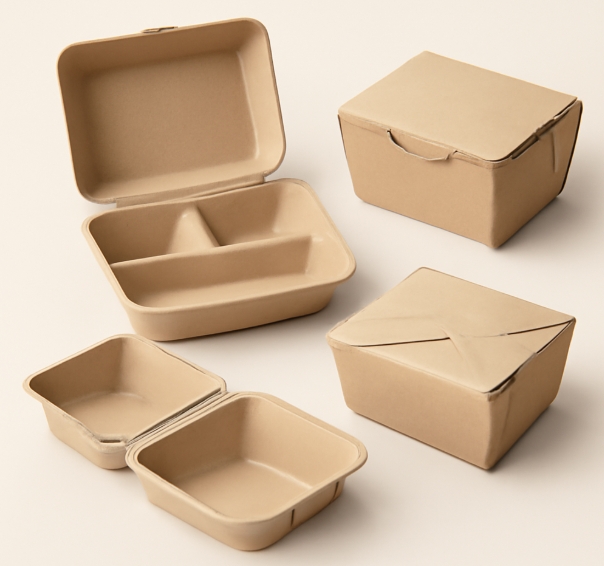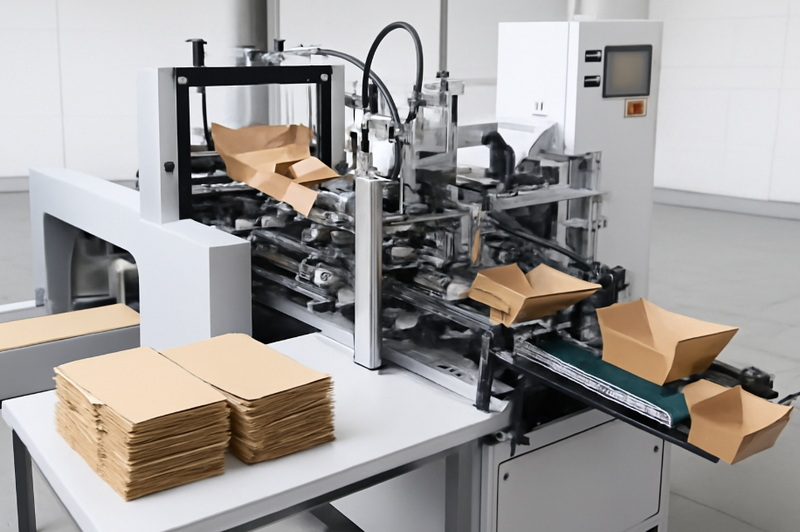
Content Menu
● Why Disposable Paper Lunch Boxes Are Essential for Food Delivery
>> Eco-Friendliness and Sustainability
>> Food Safety and Freshness
>> Versatility and Customization
>> Compliance with Food Safety Regulations
● Types of Disposable Paper Lunch Boxes in Malaysia
>> Standard Kraft Paper Lunch Boxes
>> Leak-Proof and Grease-Resistant Boxes
>> Compartmentalized Lunch Boxes
>> Windowed Lunch Boxes
>> Biodegradable and Compostable Options
● Key Factors to Consider When Choosing a Disposable Paper Lunch Box
>> 1. Type of Food
>> 2. Portion Size
>> 3. Material Strength
>> 4. Branding and Aesthetics
>> 5. Eco-Friendliness
>> 6. Closure and Security
>> 7. Cost Efficiency
>> 8. Storage and Handling
● How to Evaluate Suppliers of Disposable Paper Lunch Boxes in Malaysia
>> Product Range and Customization
>> Certifications and Compliance
>> Delivery and Logistics
>> Customer Support and After-Sales Service
● Step-by-Step Guide to Choosing the Best Disposable Paper Lunch Box Malaysia
>> Step 1: Analyze Your Menu
>> Step 2: Determine Your Priorities
>> Step 3: Shortlist Suitable Box Types
>> Step 4: Request Samples
>> Step 5: Evaluate Customization Options
>> Step 6: Compare Pricing and Terms
>> Step 7: Check Certifications
>> Step 8: Place a Trial Order
● Benefits of Using Disposable Paper Lunch Boxes for Food Delivery
● Conclusion
● FAQ: Disposable Paper Lunch Box Malaysia
>> 1. What types of food are best suited for disposable paper lunch boxes?
>> 2. Are disposable paper lunch boxes in Malaysia eco-friendly?
>> 3. Can I customize my disposable paper lunch boxes with my brand logo?
>> 4. How do I ensure the lunch boxes are food-safe and compliant with regulations?
>> 5. What should I consider when choosing a supplier for disposable paper lunch boxes?
The food delivery industry in Malaysia is experiencing rapid growth. With the rise of online ordering platforms, changing consumer lifestyles, and an increased focus on convenience, more restaurants, caterers, and home-based businesses are entering the market. This surge has made the choice of packaging more important than ever. Among the various options, the disposable paper lunch box Malaysia stands out for its eco-friendliness, practicality, and branding possibilities.
Choosing the right disposable lunch box is not just about holding food—it's about ensuring food safety, maintaining freshness, projecting your brand's values, and supporting sustainability. This comprehensive guide will help you understand how to select the best disposable paper lunch box Malaysia for your food delivery business, covering everything from materials and design to supplier evaluation and regulatory compliance.

Why Disposable Paper Lunch Boxes Are Essential for Food Delivery
Eco-Friendliness and Sustainability
Disposable paper lunch boxes are crafted from renewable resources such as paperboard and kraft paper. Unlike plastic or foam containers, they are biodegradable, compostable, and recyclable. As Malaysia moves toward greener policies and consumers become more environmentally conscious, using paper lunch boxes can enhance your brand image and attract a broader customer base.
Food Safety and Freshness
Paper lunch boxes are designed to keep food warm, fresh, and secure during transport. Many feature grease-resistant or waterproof linings, ensuring that even oily or saucy dishes arrive in perfect condition. Their sturdy construction minimizes the risk of spills or leaks, protecting your food and your reputation.
Versatility and Customization
The disposable paper lunch box Malaysia market offers a wide range of options, from single-compartment boxes for simple meals to multi-compartment designs for set meals or bento-style offerings. Custom printing allows you to showcase your logo, menu, or promotional messages, turning every delivery into a branding opportunity.
Compliance with Food Safety Regulations
Using food-grade, certified paper lunch boxes ensures compliance with Malaysian food safety standards. This protects both your business and your customers from potential health risks and legal issues.
Types of Disposable Paper Lunch Boxes in Malaysia
Standard Kraft Paper Lunch Boxes
These are the most common and cost-effective options, ideal for sandwiches, rice dishes, noodles, and light snacks. They are lightweight, stackable, and easy to store, making them perfect for high-volume operations.
Leak-Proof and Grease-Resistant Boxes
For oily, saucy, or liquid-based dishes, opt for lunch boxes with a PE or PLA coating. These coatings prevent leaks and maintain the integrity of the box, ensuring a mess-free delivery experience.
Compartmentalized Lunch Boxes
Boxes with built-in compartments are perfect for meals with multiple components, such as rice with side dishes or bento sets. They keep flavors separate and maintain food presentation.
Windowed Lunch Boxes
Some boxes feature a transparent window (usually made from PLA or PET) to showcase the food inside. This is ideal for salads, sushi, or bakery items where visual appeal is important.
Biodegradable and Compostable Options
For businesses prioritizing sustainability, there are lunch boxes made from bagasse (sugarcane fiber) or molded pulp. These materials are fully biodegradable and compostable, aligning with green business practices.
Key Factors to Consider When Choosing a Disposable Paper Lunch Box
1. Type of Food
- Dry foods: Standard kraft boxes suffice.
- Oily or saucy foods: Choose boxes with grease-resistant or waterproof linings.
- Multi-component meals: Opt for compartmentalized designs.
2. Portion Size
Select the appropriate box size based on your menu offerings. Too large, and food may shift during transport; too small, and it may spill or get squished.
3. Material Strength
Heavy or moist dishes require thicker, more durable paperboard to prevent sogginess or collapse.
4. Branding and Aesthetics
Custom-printed boxes enhance your brand's visibility and create a memorable unboxing experience for customers. Look for suppliers that offer high-quality printing and design services.
5. Eco-Friendliness
Choose biodegradable or compostable materials to appeal to eco-conscious customers and comply with environmental regulations.
6. Closure and Security
Secure closures are essential to prevent spills and maintain food hygiene during delivery. Some boxes require additional securing methods such as rubber bands or ribbons, while others have built-in locking systems.
7. Cost Efficiency
Balance quality with cost by purchasing in bulk and choosing suppliers that offer competitive pricing without compromising on safety or functionality.
8. Storage and Handling
Consider the storage space available at your premises. Collapsible or foldable designs can save space and simplify inventory management.

How to Evaluate Suppliers of Disposable Paper Lunch Boxes in Malaysia
Product Range and Customization
Look for suppliers with a wide variety of sizes, shapes, and customization options to match your menu and branding needs.
Certifications and Compliance
Ensure that the supplier's products are food-grade, certified, and compliant with Malaysian food safety and environmental regulations.
Delivery and Logistics
Reliable suppliers should offer consistent delivery schedules, ready stock availability, and efficient customer service to support your business operations.
Customer Support and After-Sales Service
Responsive customer support and flexible return policies are important for resolving issues quickly and maintaining a smooth supply chain.
Step-by-Step Guide to Choosing the Best Disposable Paper Lunch Box Malaysia
Step 1: Analyze Your Menu
List all the dishes you offer for delivery. Categorize them by type (dry, oily, liquid, multi-component) and portion size.
Step 2: Determine Your Priorities
Decide what matters most for your business—eco-friendliness, cost, branding, or durability.
Step 3: Shortlist Suitable Box Types
Match your menu items to the appropriate box types (standard, leak-proof, compartmentalized, etc.).
Step 4: Request Samples
Ask suppliers for product samples to test with your actual food items. Check for fit, durability, leak resistance, and ease of use.
Step 5: Evaluate Customization Options
Work with suppliers to design custom-printed boxes that reflect your brand identity.
Step 6: Compare Pricing and Terms
Obtain quotes from multiple suppliers, considering factors like minimum order quantity, delivery fees, and payment terms.
Step 7: Check Certifications
Verify that the boxes are food-grade and compliant with local regulations.
Step 8: Place a Trial Order
Start with a small order to test the supplier's reliability and product quality before committing to larger volumes.
Benefits of Using Disposable Paper Lunch Boxes for Food Delivery
- Environmental protection: Made from renewable resources, biodegradable, and recyclable.
- Affordable: Generally less expensive than plastic or metal alternatives.
- Convenient: Lightweight, stackable, and easy to store and transport.
- Versatile: Suitable for a wide range of foods and customizable for different meal types.
- Safe: Free from harmful chemicals, food-grade, and compliant with safety regulations.
- Customizable: Easy to brand with logos, labels, or unique designs for marketing purposes.
- Biodegradable: Break down naturally, reducing landfill waste and environmental impact.
Conclusion
Selecting the best disposable paper lunch box Malaysia for your food delivery business is a strategic decision that impacts food quality, customer satisfaction, brand reputation, and environmental responsibility. By considering factors such as food type, portion size, material strength, eco-friendliness, and supplier reliability, you can find the perfect packaging solution that meets your needs and supports your business growth.
As the demand for sustainable and convenient food packaging continues to rise, investing in high-quality disposable paper lunch boxes is not just a trend—it's a necessity for success in Malaysia's dynamic food delivery market.

FAQ: Disposable Paper Lunch Box Malaysia
1. What types of food are best suited for disposable paper lunch boxes?
Disposable paper lunch boxes are suitable for a wide range of foods, including rice dishes, noodles, sandwiches, salads, and even oily or saucy meals when using boxes with grease-resistant coatings. Compartmentalized boxes are ideal for set meals or bento boxes, keeping different food items separate and fresh.
2. Are disposable paper lunch boxes in Malaysia eco-friendly?
Yes, most disposable paper lunch boxes are made from renewable resources like kraft paper or bagasse and are biodegradable, compostable, and recyclable. Choosing eco-friendly options helps reduce environmental impact and appeals to environmentally conscious customers.
3. Can I customize my disposable paper lunch boxes with my brand logo?
Absolutely. Many suppliers in Malaysia offer custom printing services, allowing you to add your logo, menu, or promotional messages to the boxes. This enhances brand visibility and creates a professional, memorable unboxing experience for your customers.
4. How do I ensure the lunch boxes are food-safe and compliant with regulations?
Always choose suppliers whose products are certified food-grade and compliant with Malaysian food safety and environmental regulations. Request documentation and certifications to verify compliance before making a purchase.
5. What should I consider when choosing a supplier for disposable paper lunch boxes?
Evaluate suppliers based on their product range, customization options, certifications, delivery reliability, and customer service. Request samples to test product quality and fit for your specific menu items before placing a large order.

















